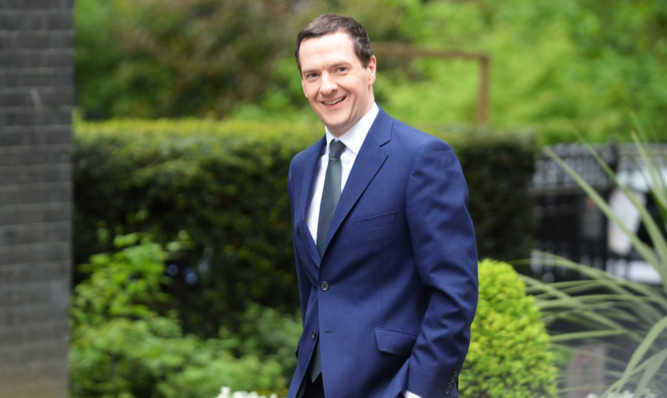George Osborne has been reappointed Chancellor of the Exchequer, Theresa May Home Secretary and Philip Hammond Foreign Secretary, as David Cameron put a stamp of continuity on the first Cabinet of his Conservative Government.
Mr Osborne was also officially made the most senior Cabinet minister beneath the Prime Minister with the title First Secretary of State – effectively equivalent to deputy PM – which was previously held by William Hague.
Mr Osborne arrived at 10 Downing Street shortly after the Prime Minister announced that he was set to announce a number of Cabinet posts, followed shortly afterwards by Mrs May and Mr Hammond.
In a swift sequences of messages on Twitter, Mr Cameron said: “I have re-appointed George Osborne as Chancellor of the Exchequer. He will also be First Secretary of State – the ranking Cabinet Minister.
“I am glad to announce that Theresa May will remain as Home Secretary. Philip Hammond will remain as Foreign Secretary.”
Mr Cameron was also expected to keep the same Defence Secretary, after Michael Fallon was seen going into Number 10.
Mr Osborne’s reappointment is a mark of the PM’s appreciation of his handling of the Treasury throughout the five years of coalition government, and continues a record of continuity in the two top posts of Government since 2010.
The Chancellor’s “long-term economic plan” was a centrepiece of the election campaign which delivered Conservatives a 12-seat overall majority in the House of Commons and his plans for £30 billion of “consolidation” to eliminate the deficit will be at the heart of the new government’s agenda.
Meanwhile, Mrs May’s reappointment after a full first term at the Home Office is a mark of her success in a post which is often seen as a graveyard of ministerial ambition, because of the high chances that events beyond their control might bring the Home Secretary down.
During the course of the election, Mr Cameron repeatedly told voters they could secure the stability of having Mr Osborne back at the Treasury by voting Conservative on Thursday. He also praised Mrs May for her part in his team.
And he named both as potential contenders to replace him as Tory leader, when revealing that he intends to stand down at the end of a second term.
Mr Cameron was expected to wait until Monday to appoint he rest of his Cabinet, with more junior jobs being shared out later in the week.
The Prime Minister has a greater scope for patronage among Conservative MPs now that he no longer has to make space in his Cabinet for five Liberal Democrat MPs, as well as a dozen or more in the lower ministerial ranks.
First Secretary of State is a title used only sporadically by prime ministers, usually to mark the special favour given to close allies and colleagues of particular importance to the government.
Previous holders included Mr Hague from 2010-15, Lord Mandelson from 2009-10, John Prescott from 2001-07 and Michael Heseltine from 1995-97. There was no holder of the title between 1970 and 1995 or between 1997 and 2001.
